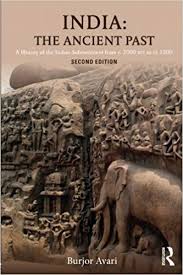Patrick Wyman’s Tides of History podcast is tackling South Asia and prehistory. He wrote up a Substack for it too, Ancient South Asia – Farming and People in India and Pakistan. I agree with Patrick here, though my confidence is low:
…It seems unlikely that a group living 1400 miles to the east would have chosen precisely the same suite of domesticated plants and animals as their related brethren in the Fertile Crescent. It’s intriguing that a fourth distinct group, as yet unsampled by geneticists, might have been living in the Fertile Crescent alongside their relatives 10,000 years ago or more. But the most likely, in my opinion, is that the group ancestral to later South Asians was living somewhere between the Indus Valley and the Zagros, perhaps on the Iranian Plateau: close enough to adopt some pieces of the Fertile Crescent farming package, close enough to head a short distance east, through the Bolan Pass, and into South Asia.
My confidence in this part is higher:
Yet they were not alone in South Asia, nor were they the only ones engaged in farming. Further to the east, along the Ganges River, the indigenous foragers were also experimenting with plant cultivation. In fact, there were no fewer than five places in South Asia where we see evidence of independent plant domestication. Mung bean, urd bean, horsegram, several varieties of millet, and rice were all cultivated extensively. These crops had the benefit of being able to grow during the summer monsoon season. South Asia was actually home to multiple Neolithics of its own.
In Southeast Asia and Europe, the hunter-gatherer populations contributed 20% or less to the ancestry of modern groups, who descend mostly from farmers and pastoralists. In South Asia the “Ancient Ancestral South Indian” (AASI) ancestry is ~50%. What’s the difference? I think the likelihood is that AASI populations were moving toward agriculture is a likely reason why they were much more demographically robust and impactful.
